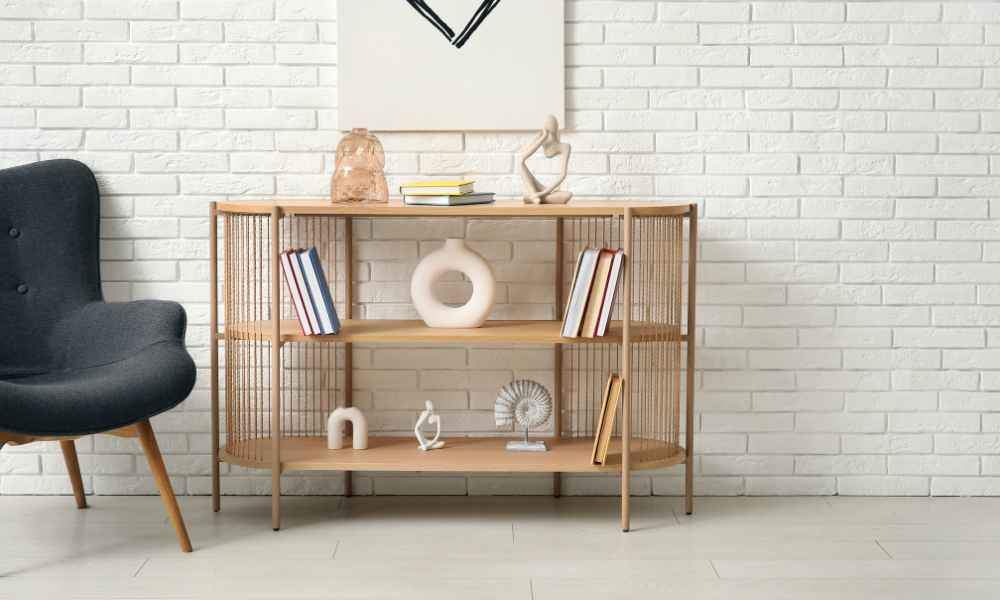Creating a chiseled bookshelf can be a rewarding woodworking project that adds a unique touch to your home decor. This style of bookshelf combines rustic charm with modern design, making it a standout piece in any room. To embark on this project, you’ll need to gather the right materials and tools, understand the intricacies of wood selection and grain, and skillfully use chisels and other tools to achieve the desired effect.
What You’ll Need
Before starting, gather essential materials and tools. You’ll need high-quality wood boards of your choice, chisels (both straight and curved), a mallet, measuring tape, pencil, sandpaper, wood finish or paint (optional), and safety equipment such as goggles and gloves. These tools and materials are essential for shaping and finishing your chiseled bookshelf with precision and safety.
Choosing The Right Wood

Selecting the right wood is crucial for achieving a chiseled look. Opt for hardwoods like oak, maple, or walnut, as they are durable and have distinct grain patterns that enhance the chiseled effect. Consider the dimensions of your bookshelf and ensure the wood is thick enough to withstand carving and provide stability. The wood’s quality will influence the final appearance and longevity of your project, so choose wisely based on your design preferences and budget.
Understanding Wood Grain

Understanding wood grain is fundamental when chiseling. Grain direction affects how wood chips and responds to carving tools. Typically, you’ll want to carve with the grain to avoid splintering and achieve smooth, clean cuts. Take time to observe the grain pattern on your wood boards and plan your chiseling direction accordingly. This understanding ensures your chiseled bookshelf not only looks visually appealing but also maintains structural integrity.
Tools Required

Chisels are the primary tools for creating a chiseled bookshelf. Use straight chisels for making straight cuts and shaping edges, while curved gouges are ideal for creating rounded or concave surfaces. A sturdy mallet helps drive the chisel through the wood, providing control and force where needed. Additionally, have sandpaper of varying grits on hand to smooth rough edges and surfaces after chiseling. Proper tools and techniques ensure precise carving and a polished finish that highlights the natural beauty of the wood.
Step-By-Step Guide To Chiseling
Begin by preparing your workspace. Clear a sturdy workbench or table and ensure you have adequate lighting and ventilation. Organize your tools and materials for easy access, including wood boards, chisels, mallet, measuring tape, pencil, and safety gear.
Preparing Your Workspace
A clean and organized workspace is essential for safe and efficient chiseling. Secure your wood board firmly on the workbench using clamps to prevent it from moving during carving. Position yourself comfortably with ample space to maneuver chisels and maintain good posture to avoid fatigue or injury.
Marking And Measuring
Start by marking the dimensions and design features of your bookshelf on the wood board using a pencil and measuring tape. Outline where shelves, corners, and decorative elements will be located. Accurate measurements ensure each component fits together seamlessly and aligns with your vision for the finished piece.
Chiseling Techniques
When ready to chisel, begin with shallow cuts along your marked lines to establish the shape and depth of each component. Use a straight chisel for straight edges and corners, applying controlled pressure with a mallet to remove wood gradually. For curved or rounded features, switch to curved gouges and adjust the angle and force to achieve smooth contours.
Assembling The Bookshelf

Once all components are chiseled to perfection, assemble the bookshelf according to your design plans. Begin by carefully fitting the shelves, sides, and any additional features together. Use wood glue or screws for secure attachment, ensuring each joint is aligned correctly. Take your time to verify measurements and adjust as necessary to achieve a sturdy and balanced structure.
Finishing Touches
After assembly, apply a wood finish or paint to enhance the appearance and protect the wood. Choose a finish that complements your home decor and provides adequate protection against wear and tear. Apply coats evenly and allow sufficient drying time between layers. Consider adding decorative elements or distressing techniques to highlight the chiseled texture and add character to your bookshelf.
Maintaining Your Chiseled Bookshelf
To preserve the beauty and functionality of your chiseled bookshelf, implement regular maintenance practices. Dust the surfaces regularly with a soft cloth to prevent buildup and maintain the wood’s natural luster. Avoid placing heavy objects that could strain the shelves and periodically check for any signs of wear or damage. If needed, touch up the finish or repair minor chips to prolong the lifespan of your handmade creation.
Benefits Of DIY Chiseled Bookshelves

Engaging in DIY projects like crafting a chiseled bookshelf offers numerous advantages. It allows you to customize the design according to your preferences and space requirements, creating a piece of furniture that is uniquely yours. DIY projects also provide a sense of accomplishment and satisfaction as you transform raw materials into a functional and artistic addition to your home. Additionally, crafting your own furniture can be cost-effective compared to purchasing high-end, custom-made pieces.
Conclusion
Making a chiseled bookshelf is a rewarding endeavor that combines creativity, craftsmanship, and practicality. By following the outlined steps—from selecting wood and mastering chiseling techniques to assembling and maintaining your creation—you can create a standout piece of furniture that adds character and style to any room. Embrace the journey of DIY woodworking and enjoy the lasting beauty of your handmade chiseled bookshelf for years to come.
